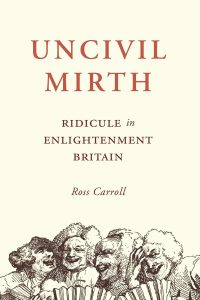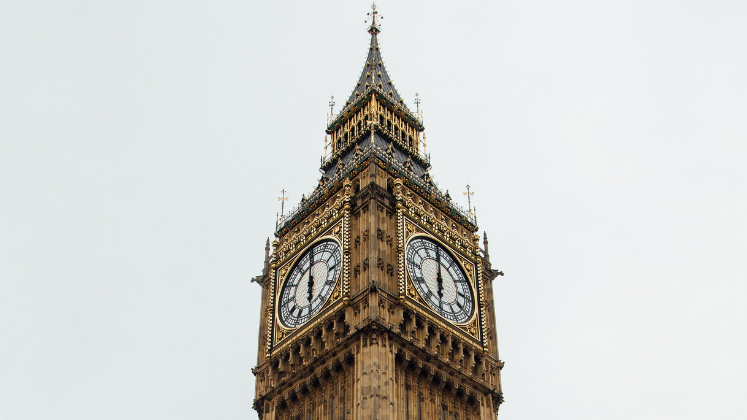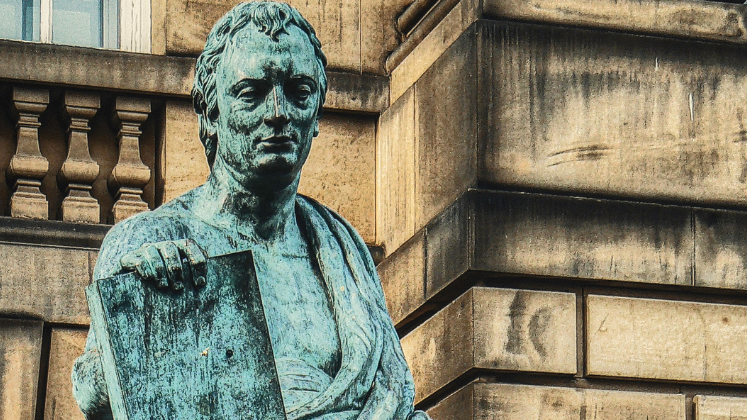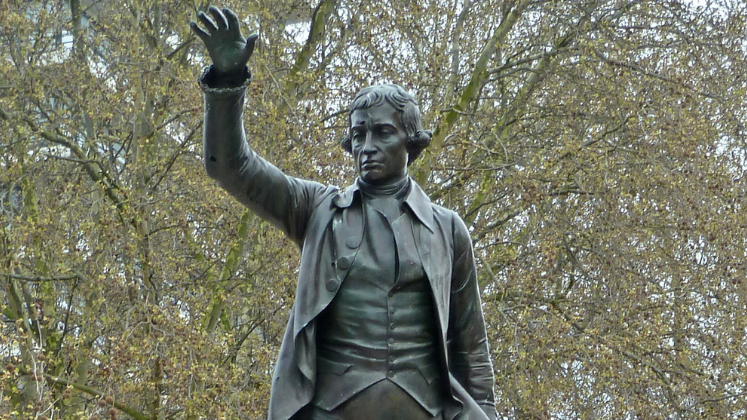In Uncivil Mirth: Ridicule in Enlightenment Britain, Ross Carroll offers a new study of ridicule’s function in public debate in Britain in the 1700s, exploring how laughter and humour were seen as ambiguous and fraught. Drawing on primary sources and modern historiography, this scholarly book will leave readers marvelling at the significance of debates on ridicule in eighteenth-century Britain, and within the Scottish Enlightenment in particular, writes Mark G. Spencer.
Uncivil Mirth: Ridicule in Enlightenment Britain. Ross Carroll. Princeton University Press. 2021.
 Find this book (affiliate link):
Find this book (affiliate link): ![]()
For those curious to know the role of ridicule in eighteenth-century Britain, Ross Carroll’s Uncivil Mirth is the place to start. In it, readers will find a reliable survey of the main lines of argument about ridicule’s function in enlightened public debate. That discussion played out, we find, in the writings of a host of figures — from best-selling works by the well-known, to the anonymous and obscure.
The short story here is that many Enlightenment philosophers viewed ‘laughing, raillery, and jesting as ambiguous and fraught’; they were fascinated with questioning how humour ‘could disrupt or sustain social life’ (2). The longer story — delivered in six, closely argued chapters — takes in hundreds of primary sources, a good deal of modern historiography, and develops nuanced arguments about how eighteenth-century answers changed over time.
Carroll identifies two, opposed traditions as starting points for the enlightened debates to follow. One tradition was exemplified by Thomas Hobbes (1588-1679). For Hobbes, argues Carroll, laughter was cast as ‘an expression of prideful superiority’ (6). That Hobbesian way of seeing things remained persistent — sometimes dominant — well into the eighteenth century. For many enlightened Britons, laughter was regarded as ‘an uncivil expression of contempt’ (10). But, there was a competing vision. For this — the more crucial for eighteenth-century debates — we must turn to Anthony Ashley Cooper, the third Earl of Shaftesbury (1671-1713).

Image Credit: Crop of engraving of William Hogarth’s ‘The Laughing Audience’ by Dent, ca 1800. Harris Brisbane Dick Fund, 1932. Licensed by The Metropolitan Museum of Art under Open Access Public Domain.
Chapters One and Two place ridicule in Shaftesbury’s ‘politics of toleration’. In his Letter Concerning Enthusiasm (1708) and Sensus Communis: an Essay on the Freedom of Wit and Humour (1709), Carroll finds Shaftesbury — like many early modernists — was wary of ridicule as a philosophical tool. But, he was also ‘strangely optimistic about its potential to both replace persecution as a response to religious enthusiasm’ and to ‘edge Christianity itself in a more tolerant direction’ (50). Shaftesbury — who had been tutored by the philosopher John Locke (1663-1704) — came to see that ‘citizens left free to banter and laugh would in time learn to “polish one another,” curbing unsociable behaviour in the process’ (53).
Not all agreed. Bernard Mandeville (1670-1733), for one. Yes, Mandeville was ‘attuned to the power of ridicule as a form of corrective’ (84) and his Fable of the Bees: or, Private Vices, Publick Benefits (1714) shared the goal of fostering toleration. But, he offered Hobbesian critiques of Shaftesbury’s account. Others, like Frances Hutcheson (1694-1746), saw more potential for ridicule — if ‘correctly managed’ — to ‘cut the unsociable […] down to size’ (84); ‘if ridicule could bite it could also mollify, facilitating convivial disagreement on questions of moral and political importance’ (83).
Chapter Three centres on the Scottish man of letters David Hume (1711-76). Carroll is surely right to see that, for the most part, ‘Hume exploited the power of ridicule to undermine folly and superstition, but did so by finessed irony rather than outright scoffing’ (88). That reading is supported with references to Hume’s A Treatise of Human Nature (1739-40) and other philosophical writings, but also by evidence drawn from Hume’s essays, pamphlets and his best-selling History of England (1754-62). Hume, maintains Carroll, came to see ‘that the search for a polite ridicule that lubricates conversations without causing aggravation was difficult and easily sabotaged’ (103).
Chapter Four is given largely to reactions to Hume, especially by Scottish Common Sense moralists: the Rev. George Campbell (1719-96), Thomas Reid (1710-96), James Oswald (1703-93) and James Beattie (1735-1803). Not a bunch known for joking. For Campbell, ridicule was ‘fitter for refuting error than for supporting truth’ (126). Reid agreed: ‘Mere Laughing is surely no Argument & whatever force it has may be employed for Error as well as Truth’ (130), he cautioned. Beattie, Carroll takes with more philosophical seriousness than did Hume, who considered him ‘that silly bigoted fellow’. Taken together, Carroll finds the Aberdonians considered ridicule ‘a permanent and indispensable check against’ sceptics, such as they took Hume to be.
In Chapters Five and Six, Carroll shows how ridicule’s use expanded in the late eighteenth century. It was a tool wielded by Mary Wollstonecraft (1759-97) — who demonstrated ‘audacity and even ferocity’ when she ‘mocks her opponents’ (211) — and found its way into Scottish abolitionists’ writings. A passage from Montesquieu’s (1689-1755) The Spirit of the Laws (1748) — treating slavery with ridicule — impacted Scottish parodies of pro-slavery positions. Where Montesquieu ‘attacks the slave trade indirectly by ironically endorsing it,’ (154) writes Carroll, some Scots — like Beattie — were reluctant to employ ridicule on such a serious topic. Other abolitionists — James Ramsay (1733-89), William Dickson (1751-1823), Alexander Geddes (d. 1864) and James Tytler (1745-1804) — had fewer reservations. In their critiques, Carroll finds precursors of Frederick Douglass’s (c. 1817-95) later condemnation of racism. In nineteenth-century America, Douglass called for ‘scorching irony’ and a ‘fiery stream of biting ridicule, blasting reproach’ and ‘withering sarcasm’ (180) to end white supremacy.
In his Conclusion, our author — a political scientist — considers his own times. ‘Although the specific debate that Shaftesbury set in motion has long petered out’, he argues, ‘the problems that inspired it are very much still with us today’ (214). ‘Taking the complexities of the politics of ridicule seriously’, he submits, ‘requires avoiding the extremes of Hobbesian pessimism and Shaftesburian optimism while preserving the insights of both’ (215). His extensive footnotes and useful bibliography provide additional leads to follow.
While this is a very scholarly book, its argument comes off as overly polemical at times. Some will think Carroll, in places, pushes his interpretations too far. To illustrate, one might return to the chapter on Hume. There, Carroll argues for ‘Hume’s scepticism about ridicule’. Hume, he says, was ‘a rarity among eighteenth-century men of letters in that he was a skilled ridiculer who deflated the pretentions of ridicule itself’ (88). That stance fits the book’s scheme; but, it seems misguided to claim, as Carroll does, that for Hume ‘The safer course, was to steer clear of ridicule altogether’ (103). It does not sufficiently accommodate the known evidence—some of which Carroll references. After all, Hume chose to publish at least two satires, A True Account of the Behaviour and Conduct of Archibald Stewart, Esq; late Lord Provost of Edinburgh (1748) and, even more cutting, Petition of the Grave and Venerable Bellmen, or Sextons, of the Church of Scotland to the Honourable House of Commons (1751). Others, he wrote but didn’t print (1750-51, skits against James Fraser). Moreover, Hume’s History of England is replete with soft ridicule and satire and contains much more veiled humour than Carroll discusses. As well, almost all of Hume’s known anonymously published book reviews employed ridicule and satire to some degree. What of those? If included, such pieces would complicate Hume’s place in Carroll’s story.
Carroll’s broad canvas encompasses many others, including Aristophanes (d. c. 386 BC), Diogenes the Cynic (d. 323 BC), Horace (65 BC-8 BC), Daniel Defoe (1660-1731), Jonathan Swift (1667-1745), Henry Sacheverell (1674-1724), Voltaire (1694-1778), James Arbuckle (1700-42), John ‘Estimate’ Brown (1715-66), John Witherspoon (1723-94), Adam Smith (1723-90), Edmund Burke (1729-97) and William Godwin (1756-1836). But, there are curious absences too.
In his Hume chapter, for instance, Carroll avoids The History of the Proceedings in the Case of Margaret, Commonly Called Peg, only lawful Sister to John Bull, Esq (1760). Hume’s authorship of that satirical pamphlet is uncertain and not accepted by all. But, even if Adam Ferguson (1723-1816) wrote Sister Peg, it warrants attention in a book on this topic, as David R. Raynor’s introduction to its modern edition shows. John Arbuthnot’s (1667-1735) prequel to Sister Peg is also missing — historian Thomas Babington Macaulay (1800-59) described The History of John Bull (1727) as ‘the most ingenious and humours political satire extant in our language’. Surely, Tobias Smollett’s (1721-71) The History and Adventures of the Atom (1769) belongs too? In covering so much — and drifting well into the nineteenth century — Carroll stretches rather thin on some that is relevant, even central, to the eighteenth century.
One cannot read Uncivil Mirth without marvelling at how significant the debates about ridicule were to eighteenth-century Britain, and the Scottish Enlightenment in particular. It’s as if Ross Carroll ushers us to sit and observe among those inhabiting William Hogarth’s The Laughing Audience (1733) or Thomas Rowlandson’s Comedy Spectators, Tragedy Spectators (1789), a composite image of which enhances his book’s cover.
Note: This review gives the views of the author, and not the position of the LSE Review of Books blog, or of the London School of Economics. The LSE RB blog may receive a small commission if you choose to make a purchase through the above Amazon affiliate link. This is entirely independent of the coverage of the book on LSE Review of Books.







